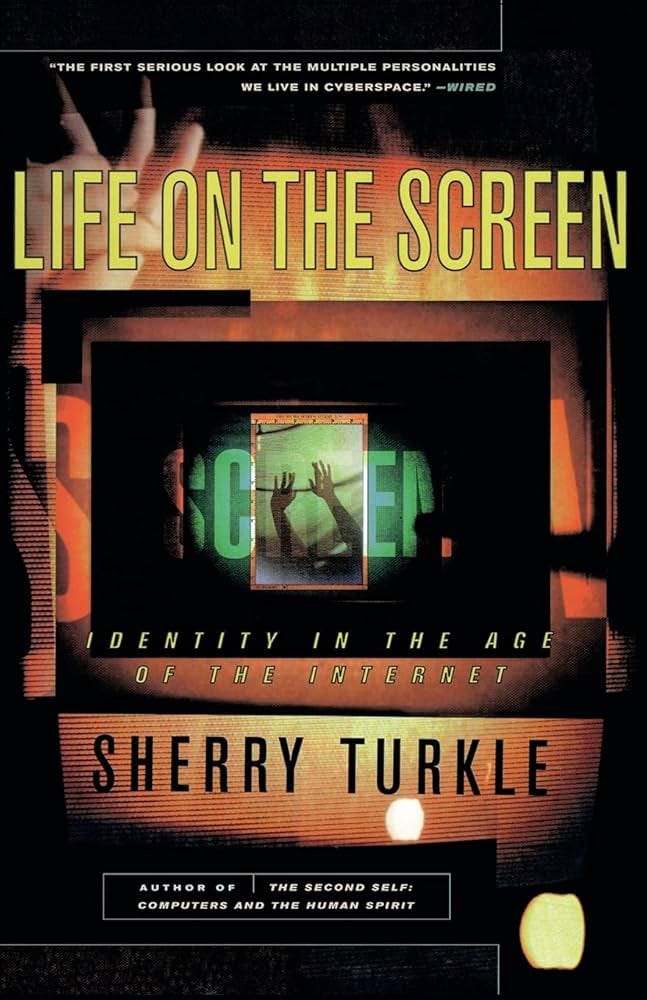From Mole Manor to the Metaverse
What a glitch in a childhood game taught me about the limits of virtual worlds
This past week, I started listening to Matthew Ball’s audiobook The Metaverse: And How It Will Revolutionize Everything on Libby. In one chapter, Ball delves into the complexities of designing realistic 3D avatars and their interactions within virtual environments.
3D avatars are a complex question. Is an avatar a complete 3D person with an outfit, or is it made up of a body avatar plus an outfit? If the latter, how many articles of clothing are they wearing and what defines a shirt versus a jacket that goes over shirts? Which parts of an avatar can be recolored? Which parts must be recolored together (is a sleeve separated from a shirt)? Is an avatar’s head a complete object, or is it a description of dozens of sub-elements like individual eyes (with their own retinas), eyelashes, noses, freckles, and so on. In addition, users expect an anthropomorphic jellyfish avatar and a box-like android to move indifferent ways. The same applies to objects. If a tattoo is placed on the avatar’s neck, it should stay fixed to their skin irrespective of any movement they make. A tie hung around that neck, however, should move with (and also interact with) the avatar as it moves. And it should move differently than a seashell necklace, which should also move differently than a feather necklace. Just sharing the dimensions and visual detail of an avatar is not sufficient.
This discussion of avatar complexity immediately reminded me of my first encounter with virtual worlds, long before I had ever heard of the Metaverse. These lines of questioning opened the floodgate to a stream of memories.
The year was 2008. The game was Mole Manor (摩尔庄园). It was an instant hit upon release. Every day after school, half my class rushed home. We dropped our backpacks, turned on our desktop computers and logged in. The world of Mole Manor waited for us. We were mesmerized.
At school, my friends and I made a pact. No matter what happened during the day in school, we would meet again in the game after class. But Mole Manor was more than a place for real-life friends. It was a world of its own. I made new friends there. Some were strangers who became close. Others remained mysteries, known only by their mole avatars and usernames.
We did a great deal of things in the game. We farmed. We fished. We built houses and designed them with care. We started communities. Some were peaceful neighborhoods. Others were secret clubs with rivalries. Sometimes, those rivalries turned into battles. When arguments broke out, I called my buddies. We gathered, stormed the enemy’s house and trashed the place. Decorations were ruined. Gardens were stomped. Proverbial blood was shed.
Also in the game I got married. I got divorced. Then I got married again. Weddings in Mole Manor were grand events. We dressed up, invited guests and held celebrations in our virtual homes. But just like in real life, some marriages did not last. A week later, the same friends who attended the wedding were there for the divorce. And then, another ceremony. Another partner. The cycle continued.
Back then, I had never heard words like VR or Metaverse — these concepts didn’t exist yet. But I was already living in one. The line between reality and the game blurred. My world existed on both sides of the screen. That was until, inevitably, my grandmother dragged me back. She scolded me for spending too much time staring at the monitor and for skipping dinner. The spell was broken. Reality pulled me away.
But now that I think about it, there was actually another moment when reality pulled me away. That moment did not happen in the real world. Instead, it took place inside the game itself.
You see, in Mole Manor, each character could buy and wear costumes. Of course, there were the usual baseball caps, shirts, trousers and shoes to choose from. But there were also accessories like hairpins, berets, walking sticks and brooches. And the problem with these accessories was that they were worn on just one side of the body.
For most people, this did not matter. But for me, it was unbearable.
Here’s what I mean.
Look at these two screenshots. They show the same character wearing the same outfit.
In the first screenshot, the character faces toward the player, slightly tilted to the left of the character. It is clear from this image that the balloon is in their right hand.
In the second screenshot, we get a side profile of the same character in the same set of costume, but this time walking to their right. Now, that same balloon is in their left hand.
The balloon switched sides.
This side-switching happened to every asymmetrical item in the game. A brooch, a shoulder bag, a walking stick. One moment, they were on one side of the character’s body. The next moment, they had jumped to the other side. The shift was instant. There was no transition, no logic. It was as if the game had flipped reality itself.
It drove me crazy.
I hated this inconsistency so much that I only picked perfectly symmetrical outfits. Hats, coats, shoes. Anything that looked the same no matter which way my character turned. I needed the illusion of consistency and I needed the game world to feel real.
At the time, I didn’t have the words for what I was feeling. But reading Ball’s book recently made me realize that my frustration a decade prior was not unique. It pointed to virtual worlds’ fundamental challenges in digital immersion, control and interoperability — challenges that developers are still trying to solve today.
The first question I asked was why this asymmetry bothered me so much back then. After all, it was just a game. Nothing in this game was more (or less) real than anything else in the game. Symmetric costumes were not more authentic than asymmetric ones. If everything was equally virtual, why did I react differently to different elements?
Reading The Metaverse made me realize why. Immersion is not about realness or authenticity. It is about consistency. People suspend disbelief in fictional worlds only when those worlds follow predictable rules. In Harry Potter, for example, people fly on broomsticks, cast spells, and talk to ghosts. None of these things are real, but they make sense within that world because they follow established rules: spells require wands; ghosts cannot touch physical objects; etc. People accept low-fidelity graphics, abstract environments and fantastical settings as long as they are internally coherent. But when objects behave in ways that contradict expectations, the illusion collapses.
And that was why the balloon in Mole Manor was so frustrating. It was not just an animation glitch; it was a fracture in the world’s logic, and that fracture shattered any sense of digital immersion.
Matthew Ball extends this idea to the Metaverse, arguing that its success depends on solving this problem at scale. A virtual world can only sustain immersion if every object behaves in a way that makes sense. Every detail must reinforce the illusion because the smallest inconsistency, no matter how trivial, can rupture the experience. The moment a world starts to feel arbitrary, the user is no longer inside it, they are simply staring at a program.
This challenge becomes exponentially harder in networked virtual environments. A single player game can control every aspect of its world, but a persistent shared Metaverse must synchronize logic across millions of users and devices in real time. A simple event, like a cup falling off a table, must not only adhere to the world’s physics but must do so identically for everyone who sees it. If one user sees the cup shatter while another sees it bounce, the illusion collapses. At that point, the Metaverse ceases to be a world and becomes something far less, a collection of desynchronized perspectives, no longer bound by a common reality.
In other words, building a virtual world is not just a technical challenge, it is a coherence challenge. Its foundation is not just in rendering fidelity or computational power but in the ability to maintain a shared predictable reality at an unprecedented scale. Without that, it will never feel like a world. It will only ever feel like a glitching simulation.
The balloon switching sides did not just break immersion. It also made me feel like I had no control.
In the game, I wanted my avatar to look a certain way. But the game did not let me. The balloon would not stay where I put it. It switched sides on its own. It reminded me that I was not truly shaping my digital identity. The game was deciding for me.
This problem still exists in many virtual worlds today. Games and social platforms give users customization options, but these options are limited. You might be able to pick an outfit, a hairstyle or a color. But you cannot decide how these things behave. The system is in control, not you.
American sociologist Sherry Turkle explored this in great depth in her book Life on the Screen. Turkle studied how people construct digital identities and argued that digital self-expression is never as free as it seems. Virtual worlds create the illusion of control, but every choice a user makes exists inside a structure they did not design. The experience of self-customization is not true autonomy. It is a negotiation between personal expression and system constraints.
In her book, Turkle observed that people form deep emotional connections to their digital selves. But these identities are always constrained by the tools available. Even in games that offer customization, players do not create freely. They assemble from pre-defined options. Every hairstyle, every facial feature, every outfit is built by developers, not users. The player does not decide what is possible. The system does.
This illusion of control also extends beyond aesthetics. It affects how people see themselves and how they interact with others in virtual spaces. Turkle observed that players begin to identify with their avatars as extensions of themselves. She describes how users project parts of their real personalities onto digital characters, forming identities that feel both separate and deeply personal. When this identity is altered by the system, whether through forced updates, restrictive customization or even small inconsistencies, it can feel like an intrusion. The virtual self becomes something users inhabit but do not truly own.
In addition, Turkle noted that this loss of control creates psychological friction. People invest emotionally in their avatars, but their agency is always limited by the platform’s architecture. This conflict mirrors real-world struggles with digital identity. Users curate online personas on social media, but their presence is still shaped by invisible algorithms. The same is true in virtual worlds. Players may believe they are defining their avatars, but in reality, they are operating within rules they cannot break.
This, then, was the second layer of my frustration in Mole Manor. I wanted real control over my digital self. And I realized I did not have it. The balloon switching hands was not only an animation glitch or a pause in the immersion. It was proof that my identity in the game was not truly mine.
Finally, this childhood frustration of mine also hinted at an even deeper problem — lack of interoperability in virtual worlds. Interoperability is not just difficult. It is fundamentally unsolved.
At the time, I thought my annoyance with asymmetric accessories was just a personal quirk. But after reading The Metaverse, I see these are the exact problems developers face when designing virtual environments. The difference is that I was dealing with a balloon. They are dealing with an entire digital universe.
For the Metaverse to succeed, Ball argues, it must be persistent and interoperable. Digital assets, including avatars and clothing, should function seamlessly across multiple environments. But this is not just a design challenge. It is a technical and economic barrier that no one has overcome. If a single balloon in Mole Manor could not stay consistent within one game, how can complex digital objects retain their appearance, physics and functionality across multiple worlds built by different developers, using different engines and following different rules?
This problem is not theoretical. It already exists in today’s digital spaces. Video game items are locked within their ecosystems. A Fortnite skin cannot be worn in Minecraft. A weapon in Call of Duty does not exist in Apex Legends. Even in blockchain-based virtual worlds, where NFTs promise interoperability, digital assets often fail to transfer meaningfully because platforms do not share rendering pipelines, physics engines or animation systems.
The issue runs deeper than visuals. As Ball explains, the Metaverse needs a shared set of physics and behavioral rules so digital objects interact predictably. A feather necklace, a seashell necklace, and a metal chain should all move differently. A leather jacket should crease and bend in ways a silk robe does not. Without this consistency, virtual worlds feel hollow, breaking the illusion of realism.
Years ago, I thought I was just annoyed by an animation glitch. Now, I realize I was seeing the limits of digital world-building firsthand. Immersion is fragile. The smallest inconsistency can break the illusion. The challenge of the Metaverse is not just making better graphics. It is ensuring that reality never flickers. Not once. Not for a second. And right now, no one knows how to do that.









